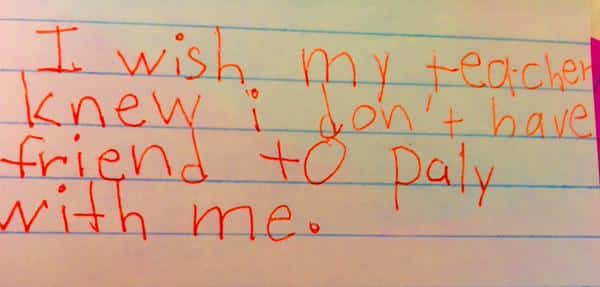Hanna Rosin Tells Mommyish Why ‘See-Saw Marriages’ Are More Flexible
 Hanna Rosin, senior editor at The Atlantic and founder of DoubleX, covers a lot of ground in her complex and compelling book The End of Men. The facetiously titled exploration of contemporary marriage, families, and education reveals that while women are succeeding, men are flailing. Although young women and girls are rapidly closing in on the space that has been recently awarded to them, such as better career opportunities and higher education, men, for the most part, are not adjusting. Whether it’s finding work in the still slumping economy or staying the steady course to college, they are quickly falling behind a new cohort of ambitious and driven females.
Hanna Rosin, senior editor at The Atlantic and founder of DoubleX, covers a lot of ground in her complex and compelling book The End of Men. The facetiously titled exploration of contemporary marriage, families, and education reveals that while women are succeeding, men are flailing. Although young women and girls are rapidly closing in on the space that has been recently awarded to them, such as better career opportunities and higher education, men, for the most part, are not adjusting. Whether it’s finding work in the still slumping economy or staying the steady course to college, they are quickly falling behind a new cohort of ambitious and driven females.
Hanna, a mother of three herself, shares with us the ruptures within the scholastic trajectory for boys, why we’re seeing an uptick in violence among young girls, and the growing trend of “see-saw marriages.”
In End Of Men, you analyze the pervasiveness of see-saw marriages in which divisions of labor are more fluid in heterosexual partnerships. Do you find this relationship model to be more practical than the rigid, straight down the middle, 50/50 relationships that some parents strive for?
From the couples I interview in the book, it seems see-saw marriages are quite a bit more flexible. Couples seem to make more practical decisions about who gets to be the breadwinner at any given moment. For younger couples this effectively means that the term ”breadwinner” is getting removed from its association with the ”man,” but can be either person in the couple. The beauty of the arrangement is that theoretically, no one feels trapped in any role. Men don’t feel trapped as breadwinners and women as homemaker. Sociologists guess this is the reason that marriages among the college educated now measure stronger and happier than ever. The Obamas have a see-saw marriage, with Michelle working while Barack went to law school, and then he became the president and she the first lady.
You don’t explicitly say this in your book, but your findings on how men aren’t expressing professional flexibility in terms of education, skill sets made me think of male entitlement. Was that at all a component of your findings?
I do think it’s harder for men to be flexible because they started at the top. The men I spoke to in Alabama were earning a great salary working as factory managers, so it’s hard for them to start at the bottom again. I’m not sure that’s the same as entitlement! But of course it’s much harder to go from the top down then to rise up. Also, no one really wants to give up power!
You draw ample attention to the worrisome ways in which young boys are failing in our education system, particularly regarding verbal and reading skills. You pull one very poignant quote about how our world is getting more verbal, but our boys are not. What do you think our sons specifically need that we’re not giving them?
Boys and girls are equally smart. It’s the external factors which seem to be holding boys back. In the early years, it seems to be largely a question of developmental speed. Boys mature at a slower rate than girls, and schools are demanding more of boys in earlier grades. Later on, boys seem to have a hard time keeping up with the disciplinary and organizational requirements of school. And over time, they start thinking of themselves as less suited for school than girls. In the book I describe how we can help boys meet some of the demands of school without making them feel frustrated or that they have to behave exactly like the girls.
Do you think it’s as simplistic as our boys don’t have the same ambition as our daughters? If so, what would account for that gender disparity so young?
Obviously we are not talking about all girls and all boys. But I do think girls still have some of that underdog mentality where they feel they need to prove something, so they charge ahead. A lot of the women I interview in the book remind me of my immigrant parents, where they seem to be very hungry to establish themselves.
When exploring the multitude of scholastic accomplishments by girls in recent years, you make a dismissive claim regarding self-esteem studies. Do you find them irrelevant to your general thesis?
I generally resist narratives that run only in one direction. So I think with teenage girls, the reality is mixed. Obviously there is evidence that girls have a drop in confidence when they reach puberty. But they also have so many more opportunities for leadership these days, and that probably explains why recent surveys show a boost in self confidence.
Your research on the uptick in female violence, especially regarding young girls, is very disturbing. Do you think girls are also internalizing the rise in violent imagery particularly sexualized violence — in our culture?
I think girls have always internalized violent imagery. The difference now is that girls feel more free to act out whatever violent impulses they have. In the book you will see that some of the girls I interview have internalized the macho code of aggression, so they actually feel proud when they win a physical fight. Like a lot of what I describe in the book, this is not really a positive development.
Where do same-sex parents fit into the End Of Men thesis, if at all? Did you encounter any patterns or tensions with them that perhaps mimic heterosexual dynamics?
That’s a great question! I was thinking so much about the changing relationship between men and women that I did not think about gay couples! That can be my next project.
(photo: hannarosin.com)





